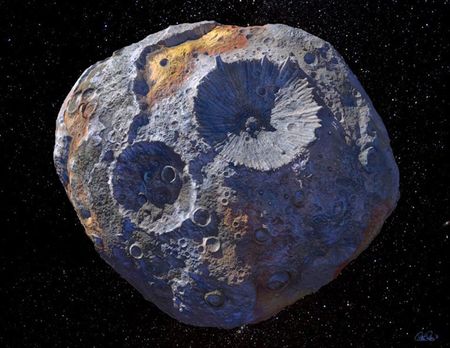

- #Scientists finetune asteroid hitting earth how to#
- #Scientists finetune asteroid hitting earth full#
Asteroid 2022 AE1 was flagged for a potential future impact by the Asteroid Orbit Determination (AstOD), an automated system astronomers around the world use to assess the asteroid risk.įurthermore, the asteroid was given one of the highest rankings on the Palermo Scale, a ranking which astronomers use to categories and prioritize impact risks. However, based on the first seven nights of observations, the chance of impact appeared to increase. If we do ever get the chance to shatter a life-threatening space boulder, it’ll be thanks to observations made by scientists here on Earth that tell to some degree of confidence us how big it is, how fast it’s moving – and how likely it is to kill us all.Since any uncertainties in an asteroid's orbit are highest in the hours just after its discovery, astronomers at several different observatories scrambled to make follow-up observations – which usually rule out any future impacts. “If you don’t have a lot of warning, the last ditch effort is to send a kinetic impactor,” she says, before clarifying: “a bomb”. This would involve blasting a spacecraft towards the asteroid and positioning it close enough that the, albeit tiny, gravitational pull of the craft could steer the asteroid off-course.
#Scientists finetune asteroid hitting earth how to#
Springmann notes that there are a couple of ideas for how to do this – including launching a “gravitational tractor”. Ideally, we’d spot such a monster long before it arrived, which might give us time to defend ourselves. What if we find an asteroid so big that it could threaten thousands or millions of lives? Or throw up so much debris into our atmosphere that the climate would be damaged for a very long time? The more solid and the heavier it is, the worse the news could be for mankind. That can help predict what kind of explosion a large asteroid might make as it enters Earth’s atmosphere. “If the asteroid comes close enough you can use radar – if you have shape, volume and composition then you can perhaps work out the density,” she adds. Systems like Atlas might be particularly useful, in theory, at spotting those just in time.īy studying how light reflects off different kinds of rocks, such as those with higher metal content and so on, scientists can then make predictions about asteroids flying towards Earth based on the light they themselves reflect, says Alessondra Springmann, a planetary radar astronomer at the University of Arizona. “ are on irregular orbits because they are not bound by the sun,” explains Rumpf. Possible future impacts of such asteroids are easier to predict – but not all space rocks play nice.

Rumpf points out that some larger asteroids are in a regular orbit around the sun, usually an oval-shaped path that may or may not intersect with Earth at some point in the future. “Even today we miss a lot of asteroids that are potentially dangerous.” “It’s a very good initiative, the Atlas system” says Clemens Rumpf, a visiting researcher at the University of Southampton who specialises in the study of asteroids. And pinpointing the landing place of 2018 LA was all the more impressive since it was such a small asteroid, less than 2m across. Thanks to this summer’s fragment discovery in Botswana, we know Atlas can get it right.

#Scientists finetune asteroid hitting earth full#
Once the full system gets going, Tonry hopes it will offer us a good chance of spotting a major potential impact and, if needs be, it could provide enough notice to evacuate the predicted impact site. Had the impact site been a more populated area, the effects would have been horrific.Ītlas consists of two telescopes in Hawaii, though Tonry is currently working with colleagues on setting up a third in South Africa, to observe the sky in the southern hemisphere. Reportedly, one person died in the incident. Tonry is referring to the 1908 Tunguska event in Siberia, in which an asteroid exploded in the atmosphere, creating a 50-100m wide fireball and flattening about 80 million trees. “It really bugged me that that number was always handed out without any uncertainty and the actual, most recent event of that type was only 100 years ago,” he explains. He was inspired to start the project years ago after constantly hearing that the chances of a dangerous asteroid hitting Earth were very low – once every millennium or so. It was set up by John Tonry, an astronomer. Atlas is a system of telescopes that has been designed with one ultimate goal in mind: save earthlings from giant space rocks. But it was then also observed by the Asteroid Terrestrial-Impact Last Alert System (Atlas) at the University of Hawaii. While still in space, 2018 LA was first spotted by the Catalina Sky Survey, a Nasa-funded project.


 0 kommentar(er)
0 kommentar(er)
